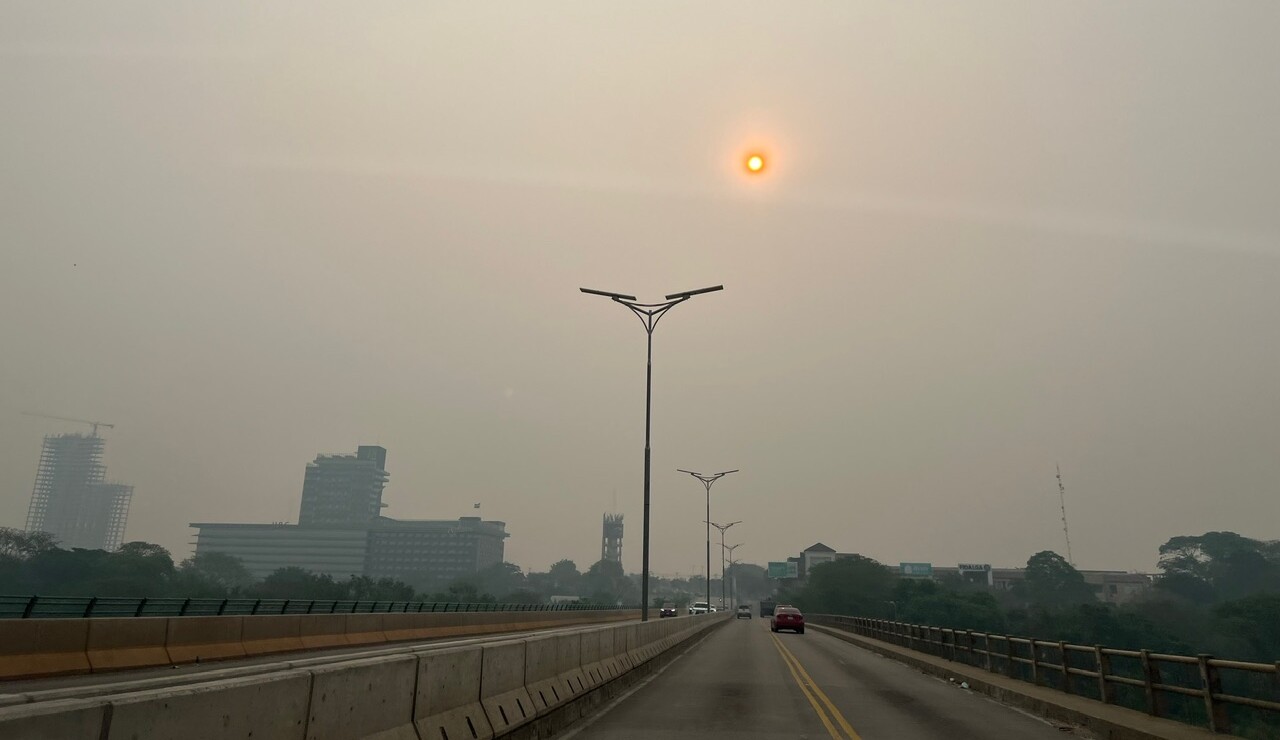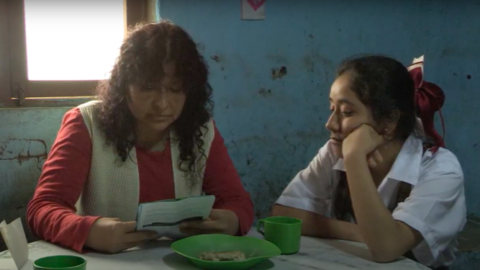
South America is burning. From Brazil – the largest Amazonian country – to Bolivia, Colombia, Ecuador, Guyana, Peru, Surinam, and Venezuela, there are fires everywhere. This year so far, some 30 million hectares (74 million acres) have gone up in flames[1]. That’s an area the size of Italy. Cities as distant as São Paulo (Brazil), Santa Cruz de la Sierra (Bolivia) and Bogotá (Colombia) have been engulfed in smoke, contributing to cardiovascular and respiratory emergencies and raising concerns about long-term health. The losses to biodiversity, both flora and fauna, are incalculable; in Bolivia alone, at least 10,000 animals have perished, some of which are already species in extinction. Moreover, the destruction of the Amazon and its buffer areas provides fuel for another wave of fires next year. In his recent TED talk, Swedish scientist Johan Rockström highlighted the direct link between climate change and biodiversity and provided a critical perspective on tipping points such as we are witnessing in this burning crisis.
Reasons behind the crisis
Factors contributing to this year’s hellish scenario abound. Climate change is one of the causes that has led to a particularly warm El Niño, to the most intense drought in Brazil (and likely its neighbors) since recording started in the 1950s, and to the increasing vulnerability of the Amazon rainforests and its buffer areas. The Amazon and its surrounding areas have also become more fragile due to increased deforestation that has reduced forest cover and disrupted ecosystems in the past decades, leading to a negative feedback loop and Amazon dieback. In addition, there is a shortage of funding and personnel to fight fires, so that fires spread more rapidly and uncontrolled for a longer time. In Bolivia, for instance, most firefighting is done by inexperienced volunteers relying largely on donations for support.
The role of policies, institutions, and incentives is critical. In many countries, there are few incentives to prevent fires. Fires clear land for expanding the agricultural frontier, opening the way for migration and colonization by landless people, increasing areas for cattle and soybean farming, and also opening new routes for illegal mining, drug trafficking and wildlife trade. These activities generate short- to medium-term income and opportunities for some parts of the population. Meanwhile, enforcement of fire regulations is often weak, not just due to a lack of equipment but because of competing interests among local and national decision makers – and their electorate. This combination of weak policies and inadequate institutional enforcement creates perverse incentives that encourage burning instead of prevention, leading to long-term detrimental economic and environmental impacts.
What can be done?
While the national and international communities focus on preserving biodiversity through financing national reserves or reforesting certain areas – all of which is essential – the scale of damage done this year demonstrates the inadequacy of a piecemeal approach. This year’s fires will require decades of reforestation and restoration, and much of the biodiversity lost cannot be reconstituted – whether in the Amazon, the Cerrado, the Chaco (a large biodiverse area spanning across parts of Bolivia, Paraguay, Argentina, and Brazil) or other affected natural forest and savannah areas.
That’s why a rethink is needed on the scale and uses of biodiversity and climate finance, especially in the Amazon region and its buffer areas. Financing prevention and management of fires must be a top priority at it is far more effective – and cheaper! – than financing to undo the damage once it has occurred.
Using finance to change incentives
Changing incentives is key. What will it take for actors and decision makers to agree that protecting forests and biodiversity is more beneficial – financially, economically, and politically – than enabling or encouraging their destruction? And how can we generate positive development impacts at a large scale and on a sustained basis for cash-strapped governments, local communities, and citizens in both the short and long term to create sustained incentives?
Providing substantial funding is crucial to making forest and climate protection worthwhile. These funds need to flow to multiple levels within countries – to central governments, which play a major role in setting and enforcing policies, as well as to states, provinces, municipalities and local communities, especially indigenous and Afro-descendent populations.
Instruments already exist but they need to be scaled
We already have tools to address this incentive problem, but they need further development and scaling to make a real impact. These include:
- Reaching agreements on carbon markets that also finance the conservation of natural areas, not just their restoration. There appears to be a trend in international carbon markets (and climate negotiations) to favor technological carbon removal solutions over enhancing and conserving natural areas. To make carbon markets work at all levels, REDD+ approaches which focus on financially incentivizing the reduction of emissions related to deforestation and forest degradation and which have positive climate and biodiversity effects, must be scaled up effectively[2]. Importantly, to scale carbon markets, more trust needs to be built among market players, in particular around environmental, social and financial integrity.
- Incorporating biodiversity into offset agreements. A number of countries have incorporated biodiversity offsets into their legislation, aiming to reduce biodiversity loss by offsetting impacts through activities like habitat restoration, the protection of equivalent ecosystems, or the creation of conservation areas elsewhere. The final text of December 2022 for the Conference of the Parties 15 (COP 15) of the Convention on Biological Diversity (CBD) explicitly mentions biodiversity offsets in its Montreal agreement. While carbon offsets and credits are difficult to manage, biodiversity offsets and credits are even more complex due to the local nature of biodiversity and any damages it sustains. On the other hand, damages in South American nature areas have been so large that it may be time to see how restoration and future conservation could be incentivized through offset schemes. Set-ups such as the recent UK nature markets could serve as examples.
- Expanding debt-for-biodiversity conversions, such as the recent one brokered by the Inter-American Development Bank to finance Galapagos conservation while at the same time meaningfully decreasing Ecuador’s debt. This approach could be applied in many other countries.
- Supporting innovative approaches like Brazil’s proposal for a large-scale global fund, the Tropical Forests Forever Facility (TFFF). This initiative would provide an investment vehicle for sovereign countries, investors and philanthropies to finance biodiversity and climate efforts at scale, generating annual returns for investors. The fund is explicitly neither donation nor official development aid (ODA)-based, but would use the returns it generates in capital markets to pay tropical forest countries for not burning or cutting down their natural forest areas. Importantly, the TFFF would focus on forest cover monitoring, not on carbon accounting. This initiative would have significant co-benefits for both climate and biodiversity, and monitoring a single indicator, namely forest canopy conserved, would decrease a lot of the complexities found in other financing approaches. No wonder the New York Times calls it an ‘elegant idea’. The incentives for tropical forest countries to participate would be significant. For instance, a country like Brazil could receive USD 600 million per year to protect its Amazon forest region. The government of Brazil aims to continue advancing this initiative ahead of Climate COP30, which it hosts in 2025 in the Amazonian city of Belem.
The Way Forward
Enhancing these scaled approaches to climate and biodiversity finance could be the game changer the world urgently needs. It does not take much to make the calculation. If current fire trends continue, the Amazon will be irreversibly damaged within the next decade. This will have far-reaching impacts on the ‘world’s lungs’ and the global economy, from altering the global climate to severely affecting South America’s water supply, increasing droughts, worsening air pollution and associated morbidity, and causing massive biodiversity loss. Simply put, the costs of doing nothing are immeasurably greater than the cost of acting now to address deforestation, preservation, and restoration at scale.
At CBD COP 16 in Cali in October 2024 and Climate COP29 in Baku in November 2024, it is vital to link climate and biodiversity efforts more emphatically and pragmatically in order to raise the ambition of financial solutions to new levels. Examples abound of policy changes and stronger institutional frameworks shifting incentives and offering decision makers and actors viable alternatives to the status quo. We must be bolder to prevent the crisis in the Amazon from becoming irreversible.
Endnotes
[1] It is difficult to find aggregate figures for South America. Fundación Tierra reports 10.1 million ha burned in Bolivia until October 2024 (https://www.ftierra.org/index.php/publicacion/documentos-de-trabajo/attachment/254/52). INPE (National Institute of Spatial Research) of the Brazilian government reports 38.1 sq km burned in Brazil, including 10.6 million ha in the Amazon region and 19.1 million ha in the highly biodiverse Cerrado, adjacent to the Amazon area (https://terrabrasilis.dpi.inpe.br/queimadas/aq1km/). Satellite-based estimates by the European Commission’s Joint Research Center are much higher at 53 million ha burned in Brazil, and a total of 88 million ha burned until October 15 2024 in Bolivia, Brazil, Colombia, Ecuador, French Guiana, Guyana, Peru and Venezuela. We have chosen a more conservative figure of a total of 30 million ha, taking into account the in-country estimates in Brazil and Bolivia.
[2] REDD+ is the acronym for “Reducing Emissions from Deforestation and Forest Degradation”, with the “+” representing the conservation, sustainable management of forests, and enhancement of forest carbon stocks in developing countries
Author Bios
Karin Kemper, Co-chair Climate Change Working Group Scaling Community of Practice
Karin Kemper, formerly the Global Director for Environment, Natural Resources and Blue Economy at the World Bank, serves as an Independent Advisor to international and bilateral organizations. Her focus is on scaling finance and innovation for climate, biodiversity and sustainable development.
Matt Eldridge, Co-chair Climate Change Working Group Scaling Community of Practice
Matt Eldridge is a senior program officer at the Bill & Melinda Gates Foundation. He focuses on climate finance and macroeconomics and has worked in research, consulting, and at the World Bank.









